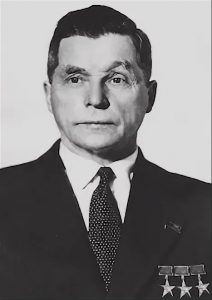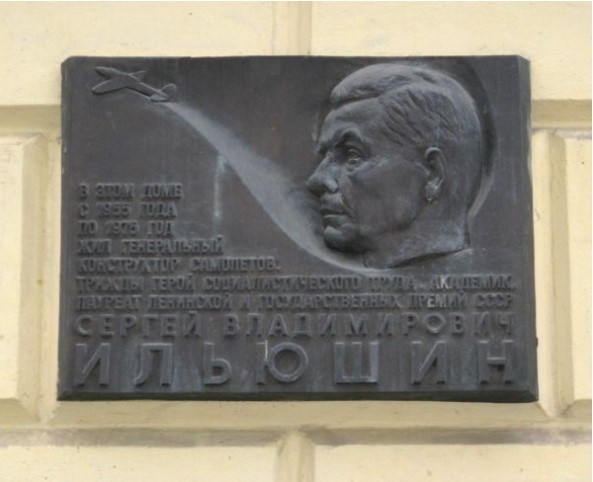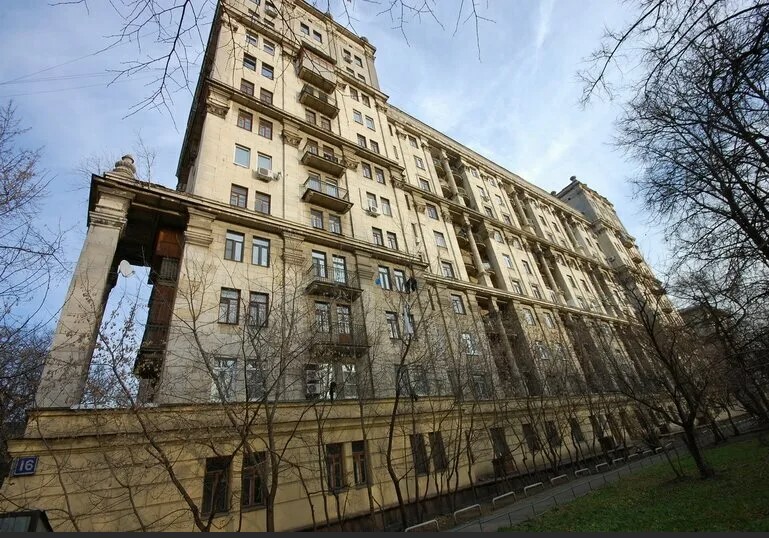Sergey Vladimirovich
Ilyushin
1894-1977

Sergey Vladimirovich Ilyushin was a Soviet aircraft designer, developer of the most massive combat aircraft in history — the Il-2 attack aircraft, thrice Hero of Socialist Labor (1941, 1957, 1974), the only winner of seven Stalin Prizes (1941, 1941, 1943, 1946, 1947, 1950, 1951), laureate of the Lenin Prize (1960), State Prize of the USSR (1971). He was born in the village of Dilyalevo, the Vologda province (now part of the Vologda district of the Vologda region) in a peasant family. He worked since childhood. In 1905 he finished the Zemstvo primary school in the village of Berezniki. In May 1919 he was drafted into the Red Army as a mechanic, senior aircraft mechanic, military commissar of the 6th Aviation train workshops of the 6th Army, head of the Caucasian Aviation Train workshops as a part of the 9th and Separate Caucasian Armies. In 1921, he was sent to study at the Zhukovsky Institute of Engineers of the Red Air Fleet, which was reorganized into the Red Army Air Force Academy in 1922. He graduated from the Academy in 1926. In 1933, he was the head of the design team at the Central Design Bureau (CCB). Ilyushin ‘s brigade was there by 1936. She created the TSKB-26 aircraft, and then an improved modification of this machine — the DB-3 bomber. The DB-3 was adopted by the Air Force and put into serial production. In 1937, it set several altitude records with various loads, and in 1938 and 1939, record flights were made, including 8000 kilometers from Moscow to North America. A further development of this promising aircraft was the IL-4 bomber (flight range of 3,800 kilometers, ceiling of 9700 meters and maximum flight speed of 430 km/h). The aircraft could lift up to 2500 kilograms of bombs and during the Great Patriotic War it was used to strike operational and strategic targets in the enemy’s rear, was used as a front-line bomber to destroy enemy manpower and military equipment, and was also produced in a torpedo-carrying version for Naval aviation. Over 5,000 Il-4 units were produced. Since August 1936 he was the Chief Designer of the Design Bureau at the Menzhinsky Aviation Plant. Simultaneously from 1936 to 1938 he was the Head of the Main Directorate of Experimental Aircraft Construction in the People’s Commissariat of Defence Industry of the USSR. In 1939, Ilyushin Design Bureau developed the Il-2 attack aircraft, which had an excellent combination of aerodynamic layout, stability and controllability with a sufficient reserve of engine power and a rational booking scheme for all vital parts of the aircraft. It was the first aircraft of this type in the USSR. It was launched into a series in 1940, but before the outbreak of the Great Patriotic War it was produced in small batches. In addition, according to the requirements of some short-sighted leaders, instead of a two-seat version, they began to produce a single one, which led to large losses from enemy fighter fire. The war showed the need for such an aircraft, already in the autumn of 1941. Production of the IL-2 became a priority, and since 1942 it was produced only in a two-seat version. During the Great Patriotic War, more than 41,000 IL-2 aircraft and its modifications were built. The legendary IL-2 rightfully became one of the symbols of Victory over fascism. By the Decree of the Presidium of the Supreme Soviet of the USSR dated November 25, 1941 for outstanding achievements in the creation of aviation equipment and the development of its production in difficult wartime conditions, Sergey Ilyushin was awarded the title of the Hero of Socialist Labor with the award of the Order of Lenin and the Hammer and Sickle gold medal. During the Great Patriotic War, S.V. Ilyushin’s design bureau developed and built the Il-6 heavy bomber, with powerful twelve-cylinder ACH-3OB diesel engines and five guns. The flight range reached 4000 kilometers at a speed of 465 km/h. The aircraft was not put into mass production due to the complexity of the design, but the further course of the war and the almost complete absence of strategic aviation from the Red Army raise doubts about the validity of such a decision. Also, taking into account combat experience, the Il-2 was upgraded, which received a more powerful A.A. Mikulin engine (1760 horsepower), the mass of ammunition increased, armament was strengthened, armor protection was improved. Ilyushin Design Bureau continuously worked to create a new generation of attack aircraft by installing more powerful engines and better weapons on them, changing the layout of the aircraft and obtaining higher speeds and flight ranges. IL-2 modifications were IL-8 and IL-10 aircraft. After the war, the IL-16 and Il-20 attack aircraft were developed. To improve the accuracy of aiming fire at ground targets in the IL-20 aircraft, the overview was improved and, in this regard, the layout of the attack aircraft cabin was changed. The projected speed was 515 km/h, but it was very difficult to achieve it with piston engines. Therefore, on the instructions of the Air Force Command, the Ilyushin Design Bureau developed a battlefield aircraft with Il-40 turbojet engines. For outstanding achievements in the creation of new aviation equipment and labor heroism, the Decree of the Presidium of the Supreme Soviet of the USSR dated July 12, 1957 Sergey Vladimirovich Ilyushin was awarded the second gold medal “Hammer and Sickle”.
Address: Moscow, Petrovsko-Razumovskaya alley, 16

